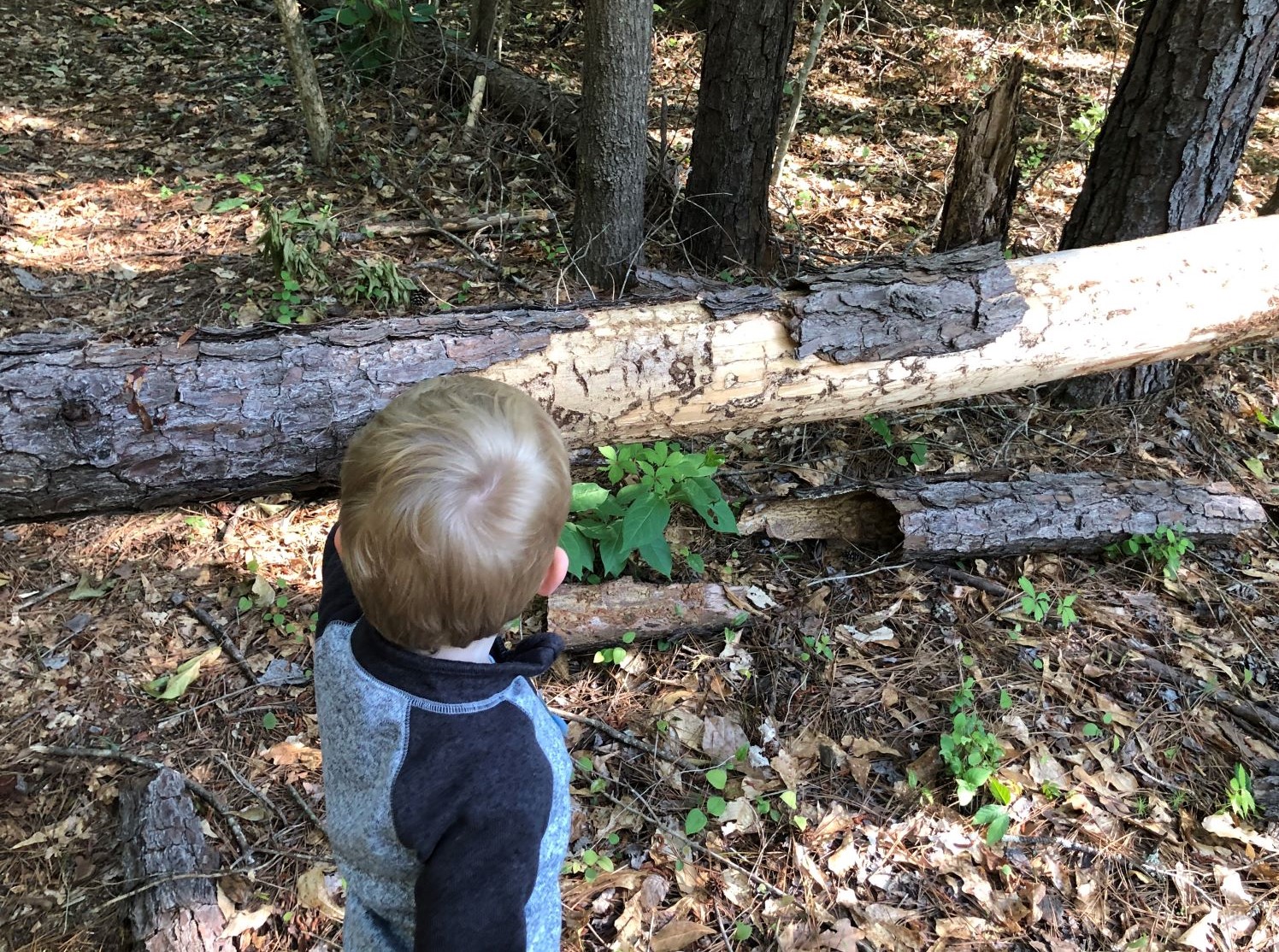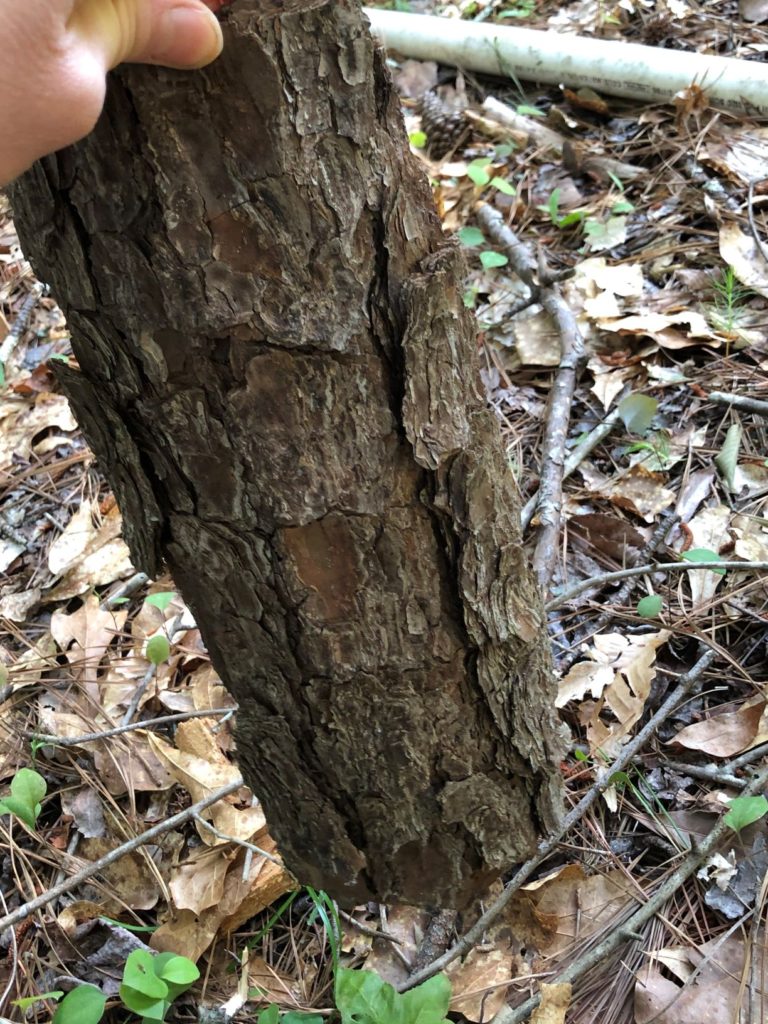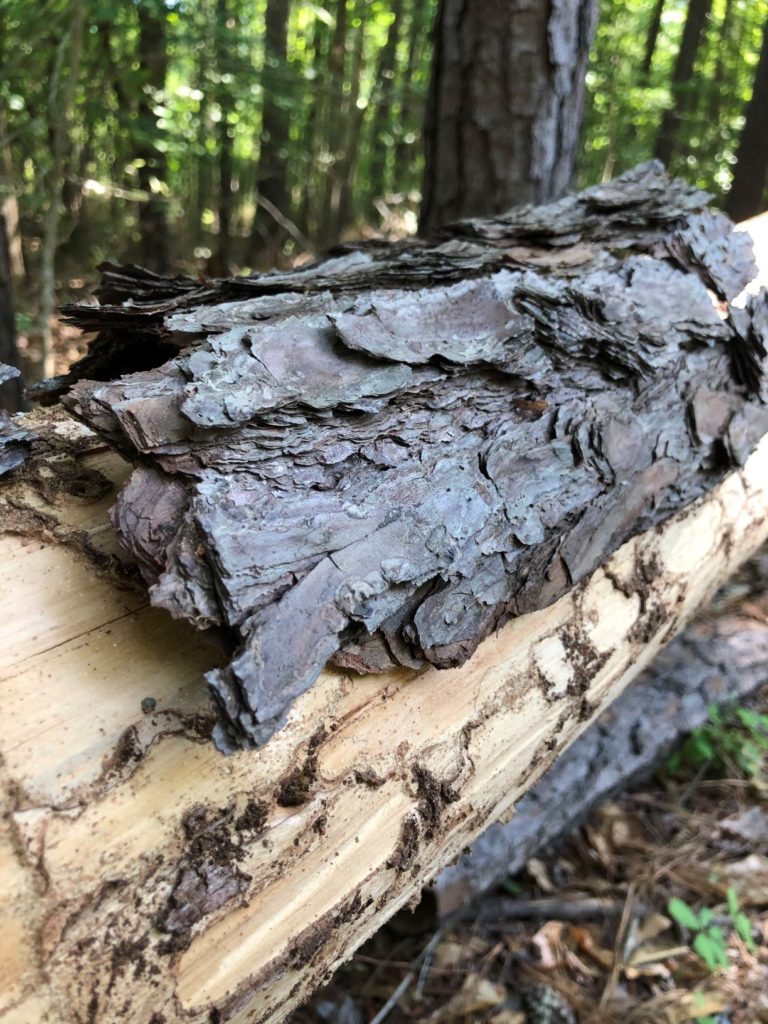Tree? Are you OK?

Locryn’s biology lesson today was a bit less cheerful than some of our past lessons. Today, he learned about the Southern Pine Beetle (Dendroctonus frontalis).
The Kitchen home is surrounded by pine trees. We are blessed with space and few neighbors (the ones we have are wonderful). When you sit outside on a quiet evening, you can hear frogs chirping and owls hooting. Sadly, you can also hear the sound of the Southern Pine Beetles munching.
These tiny beetles are about the size of a grain of rice but cause huge problems. They are an invasive insect native to the Southeastern United States. In order to reproduce, the beetle finds a host pine tree and burrows under the bark. It is here that they feed and lay their eggs. Once the baby beetles hatch, the host tree is dead. The young beetles move on to another tree, continuing the cycle.
These sick/dead trees are highly susceptible to fire and wind. Every morning after a storm with heavy wind, we do a walk about to inspect for damage from any fallen trees. It is guaranteed that at least one pine tree will have fallen. (Side fact: In 1995, South Carolina lost $125 million in timber revenue due to the Pine Beetle.)
Today, Locryn saw one of these fallen trees due to the Southern Pine Beetle. We discussed how a tree’s bark is like a person’s skin. It helps keep the tree cool (or warm), safe from animals and disease, and keep it hydrated. He asked if the tree was sick and if he could help it. As he gave the fallen tree a hug, my heart melted. My husband and I both attempted to explain to him that a beetle had eaten the tree for food. His reply was that the beetle was “NOT NICE!” We agreed.

The lesson continued to reassure him that fallen trees are not always sad. Fallen trees become homes for lichen, moss, fungus, insects, etc! They are also good spots to sit on a long hike or to walk on like a balance beam!

ENJOY!